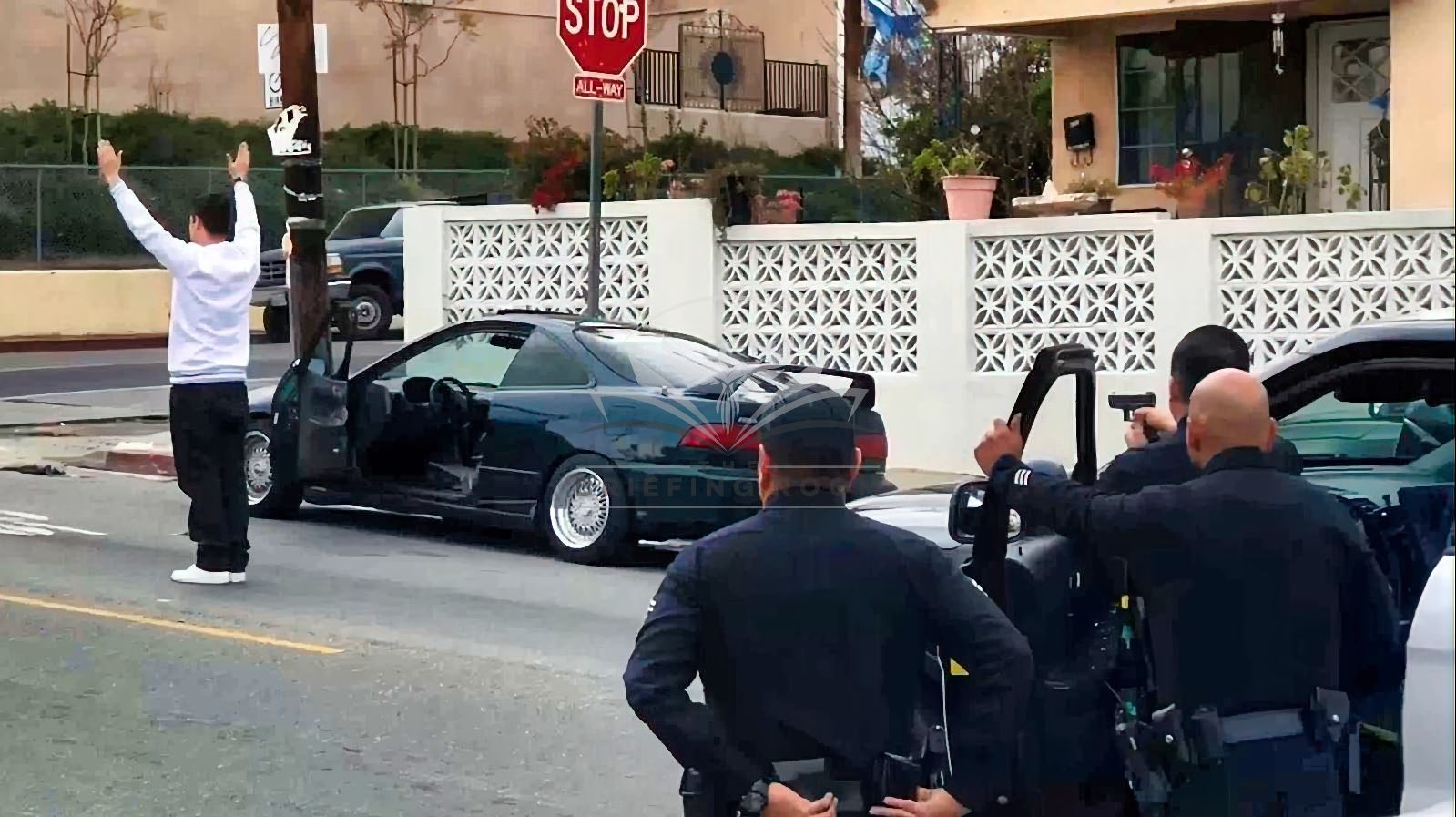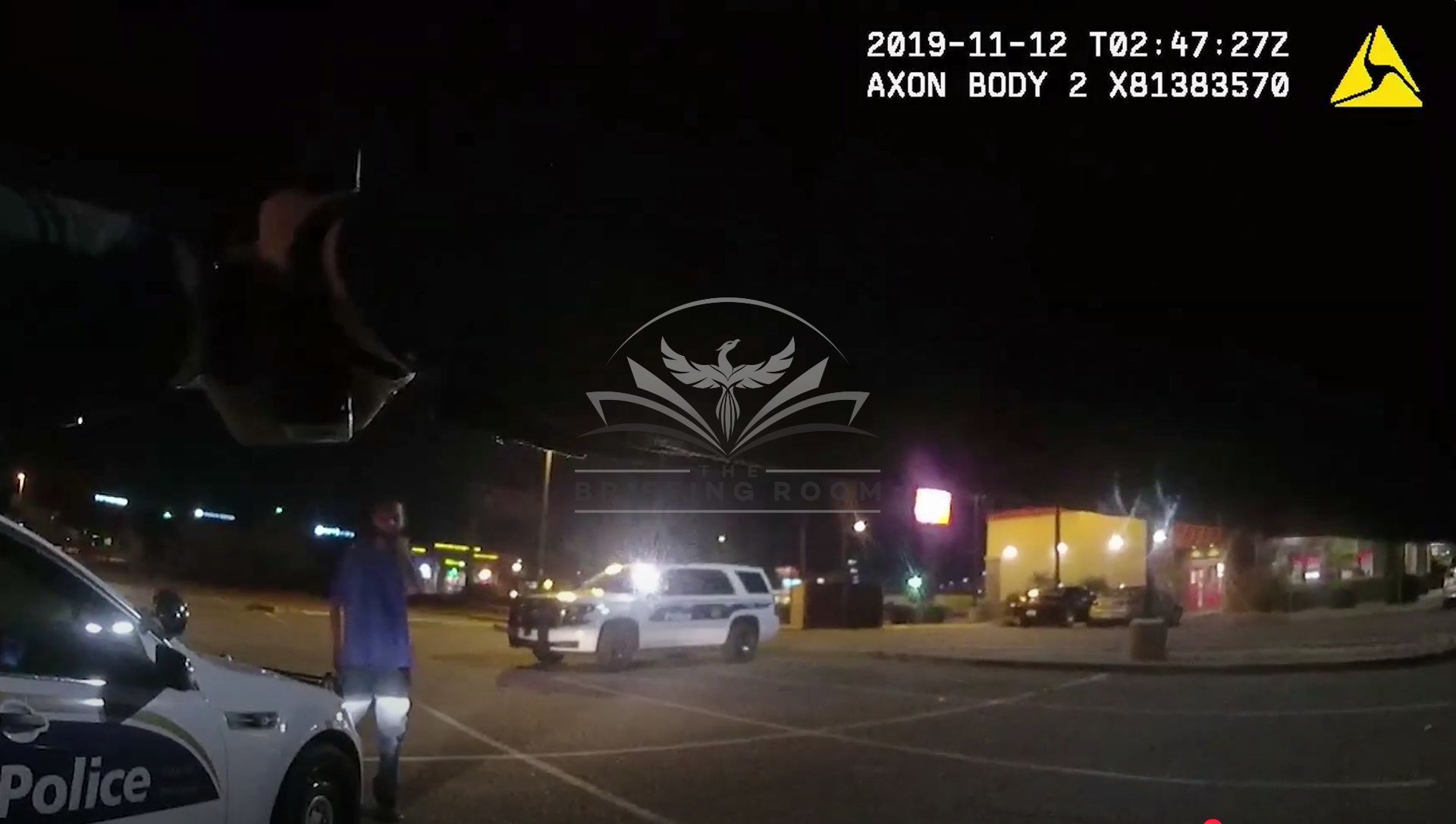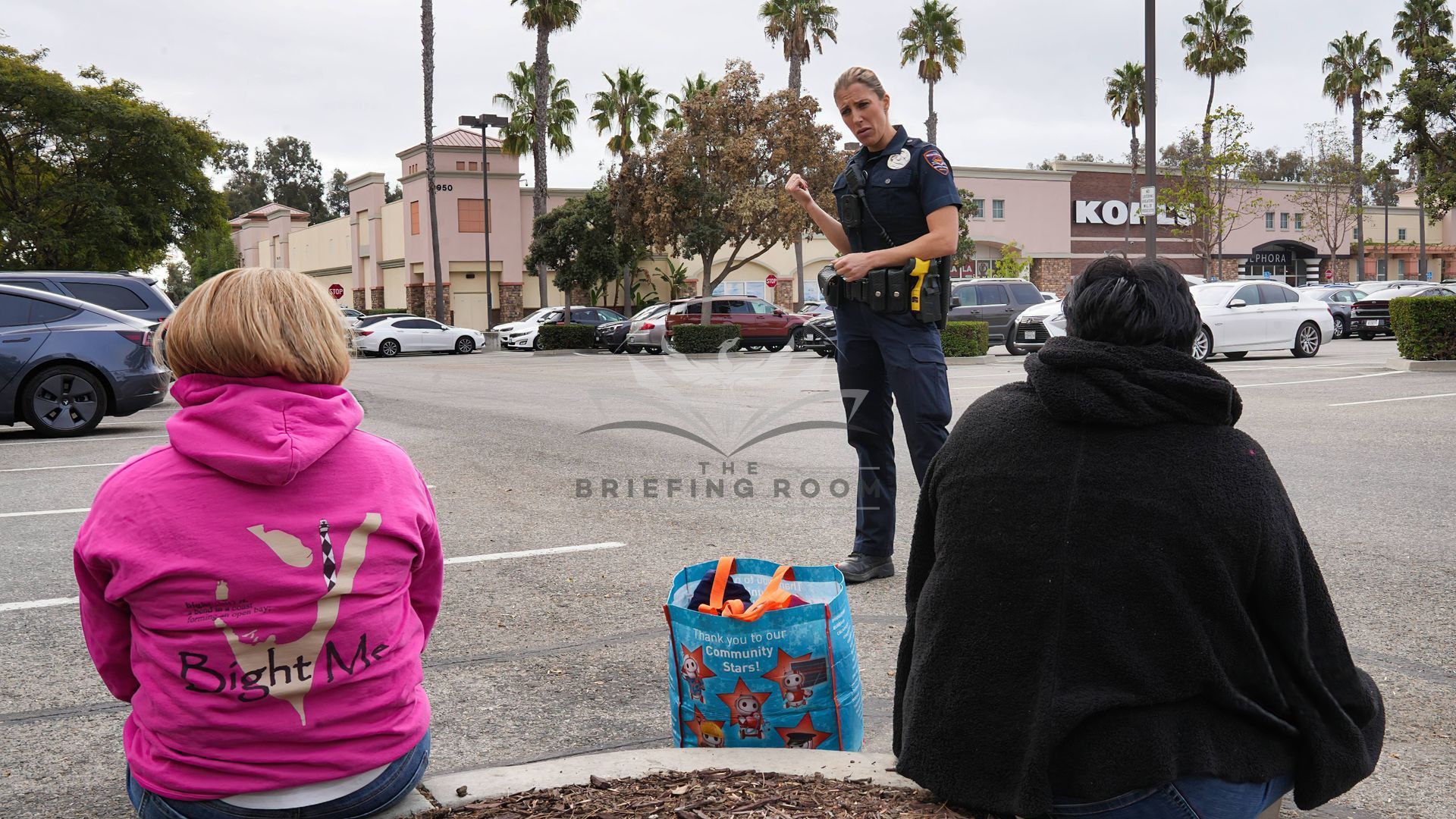Can Officers Use High-Risk Vehicle Stop Tactics On The Occupants Of A Stolen Vehicle? -

This post is only offered as a discussion topic only and does not represent legal advice. Officers must refer to the laws in their own State as well as their agency's policies, which can be more restrictive on officers that the law requires.
On August 14, 2024, the 9th Circuit issued an opinion that discussed whether officers can point firearms at the occupants of a vehicle simply because it’s a stolen vehicle. The answer will challenge conventional law enforcement training, so we will take a little extra time on this one.
The case is called Chinaryan v. City of Los Angeles, and here are the facts of what happened:
Officers in Los Angeles knew that a black Chevrolet Suburban Limousine had been stolen two days before this incident and that its LoJack signal was pinging in a specific area of the city. Two days after the theft, in the vicinity where the LoJack signal was pinging, they saw a black Chevrolet Suburban limousine being driven by a woman. The vehicle had dark-tinted rear windows, and they could not see if anyone else was in the Suburban. A records check of the license plate revealed the plate came back to a Dodge Ram. The officers conducted a high-risk vehicle stop that involved several officers pointing firearms at, or in the direction of, the stopped vehicle while a helicopter kept watch overhead. The female driver did not violate any traffic laws while she was being followed and she cooperated with everything the officers asked of her, including the instructions given to her during the high-risk vehicle stop. She lay face down on the pavement for over three minutes and was eventually handcuffed. Her daughter and a friend were in the vehicle as well. Both of them came out of the Suburban at gunpoint and cooperated with police. The daughter was so scared she was shaking and ended up urinating herself. Officers used the Vehicle Identification Number from two areas of the Suburban to determine that the vehicle belonged to the driver’s husband was not stolen and the Department of Motor Vehicles most likely sent them a license plate that was one digit off from what their license plate should have been. One officer on scene wanted to investigate if the VIN had been illegally switched so the women were still not released until that additional investigation was completed a few minutes later. The stop lasted 24 minutes in total.
The women sued both for Federal violations of their Fourth Amendment rights and violations of State law against the officers, the agency and the city. For the Federal violations, the case went before a district court that granted qualified immunity to the officers, saying the law was not clearly established. However, the failure to train case against the city and agency was permitted to be heard by a jury. A jury found in favor of the city and agency. The case we see here now is the women moving for judgment as a matter of law before the 9th Circuit, arguing that despite the jury verdict, the officer’s tactics could not be justified based solely on suspicion of a stolen vehicle. And that brings us to this case.
The 9th Circuit discusses this issue with the attorneys involved in the case. As additional knowledge here are two prior case decisions; In Washington v. Lambert from 1996 and Green v. City & County of San Francisco from 2014, the 9th Circuit ruled that officers can be held liable for conducting a high-risk traffic stop, including pointing weapons at a vehicle, if those tactics are based on nothing more than reasonable suspicion that the vehicle was stolen. In the Washington case, the 9th Circuit said, “The Fourth Amendment protects persons “from the terrifying and humiliating experience of being pulled from their cars at gunpoint, handcuffed, or made to lie face down on the pavement when insufficient reason for such intrusive police conduct exists.”
On August 14, 2024, the 9th Circuit Court of Appeals released their opinion in this case. They said, “Although vehicle theft is an arguably severe crime…the officers had no articulable bases to suspect that plaintiff’s posed a threat to anyone beyond the generic threat that a suspected vehicle thief poses. Plaintiffs were not uncooperative or taking action at the scene that raised a reasonable possibility of danger or flight. (The sergeant) followed their vehicle for several minutes before stopping them, during which time (the driver) obeyed all traffic laws and did not drive evasively. (The driver) pulled over at the same time as officers flashed their lights to initiate the stop. Once stopped, she and her passengers complied with all officer commands.”
“The officers had no information the (the women) were currently armed or that a crime that may involve violence was about to occur. Nor was this a situation where the stop closely followed a violent crime. The owner of the stolen Suburban was not even present when his vehicle was taken and the theft took place two nights before the officers encountered (the women). Even if (the woman’s) vehicle had been the stolen one, as the officers suspected, the passage of time gave rise to the possibility that the occupants were unconnected to the crime. Further, any safety-based justification to restrain (the women) in handcuffs weakened considerably once the DMV error became apparent and the officers ascertained that (the women) were cooperative and unarmed. Yet (the women) were inexplicably restrained for several additional minutes.”
“Construing the facts in the light most favorable to (the women), the officers’ reasonable suspicion that (the women) had stolen the Suburban, standing alone, was not enough to justify such intrusive tactics.”
“…(the women) are entitled to a trial on their Fourth Amendment claims against the individual officers.”
And finally, regarding the State law claims against the officers, the court said, “That the officers worked to resolve the incident after they discovered the DMV error does not preclude a finding that they acted recklessly beforehand. In fact, a jury could infer that the officers took more time than was reasonably necessary to uncuff (the women) once it became apparent that (the women) had committed no crime, reflecting a cavalier indifference to (the womens’) rights. In light of the evidence, the district court erred in granting summary judgment in favor of the officers on (the womens’) (State law violation) claims.”
Let's recall a similar 9th Circuit Case that came out in 2023 called Brown v. County of San Bernardino which also involved officers pointing firearms at an elderly woman whom they thought was driving a stolen vehicle. Officers in that incident did not receive qualified immunity as either.
(if you are a subscriber to TheBriefingRoom.com, you can find a video on that case in The Briefing Room Library titled, “Is It Enough To Say You Were Just Following Your Training?”)
It would be prudent for officers to evaluate if any changes need to be made on how their agency trains to handle traffic stops on stolen vehicles. When there is no indication of a serious crime, an objectively reasonable threat that’s specific to the people inside that vehicle, or some level of resistance, it's going to be challenging for officers to defend their pointing of firearms at the occupants of the vehicle simply because it’s a stolen vehicle.
This blog topic serves as a summary of our video lesson on this crucial topic. If you're interested in accessing the full video lesson and additional resources, click the link to register for your free 30-day trial.
The Briefing Room has a short training video available on this exact scenario so agency supervisors can easily train every officer in your agency on this essential topic.
90-Second Training Videos Your Supervisors Use During Briefing or Roll Call To Develop High-Performing Teams of Officers.
✅ Lower Liability
✅ Retain Officers
✅ Build Community Support
🌟 Produced Exclusively by Active-Duty Law Enforcement Instructors 🌟
© 2024 THE BRIEFING ROOM
Site Design by Solmark Creative | Development by Adam Wills Marketing



